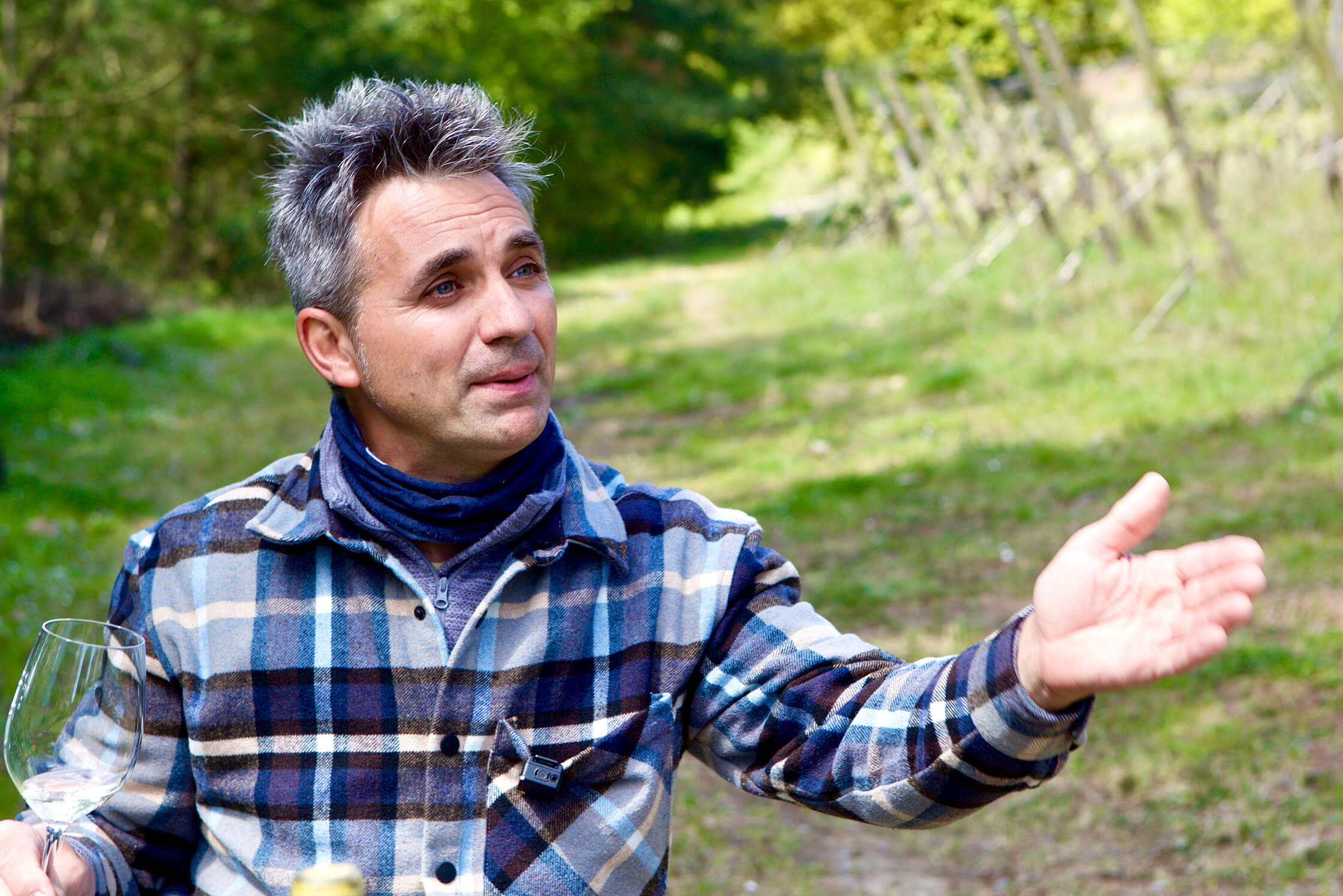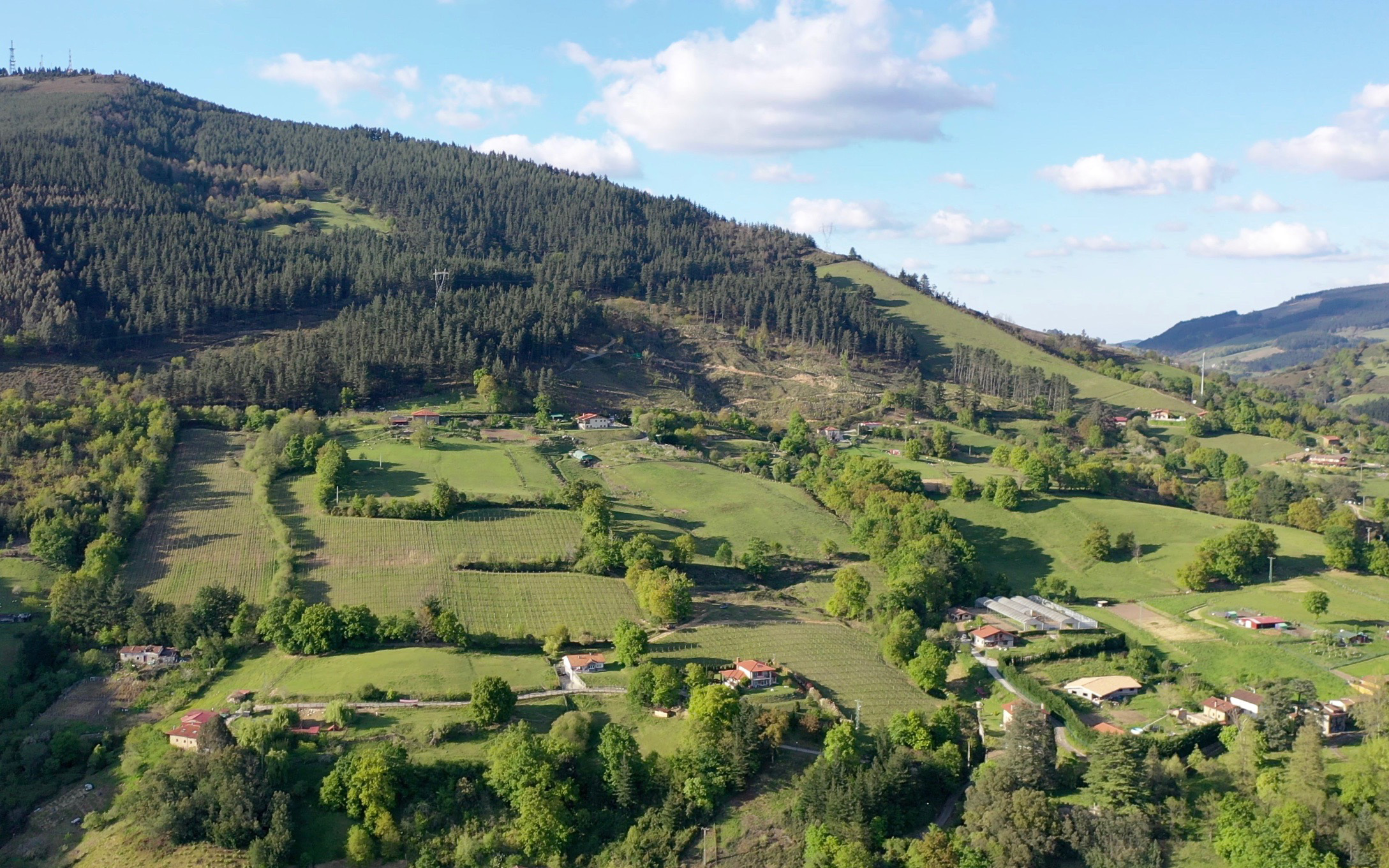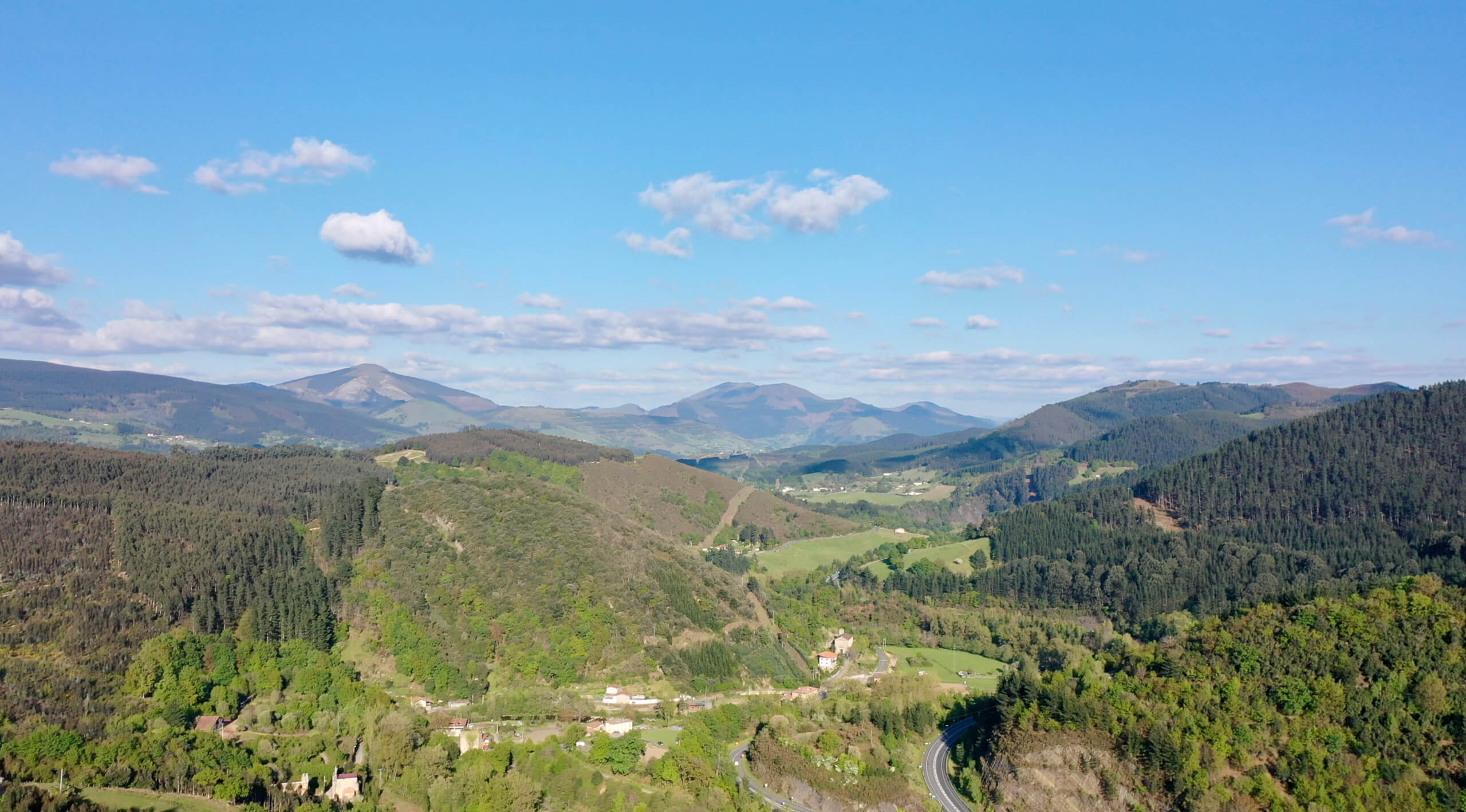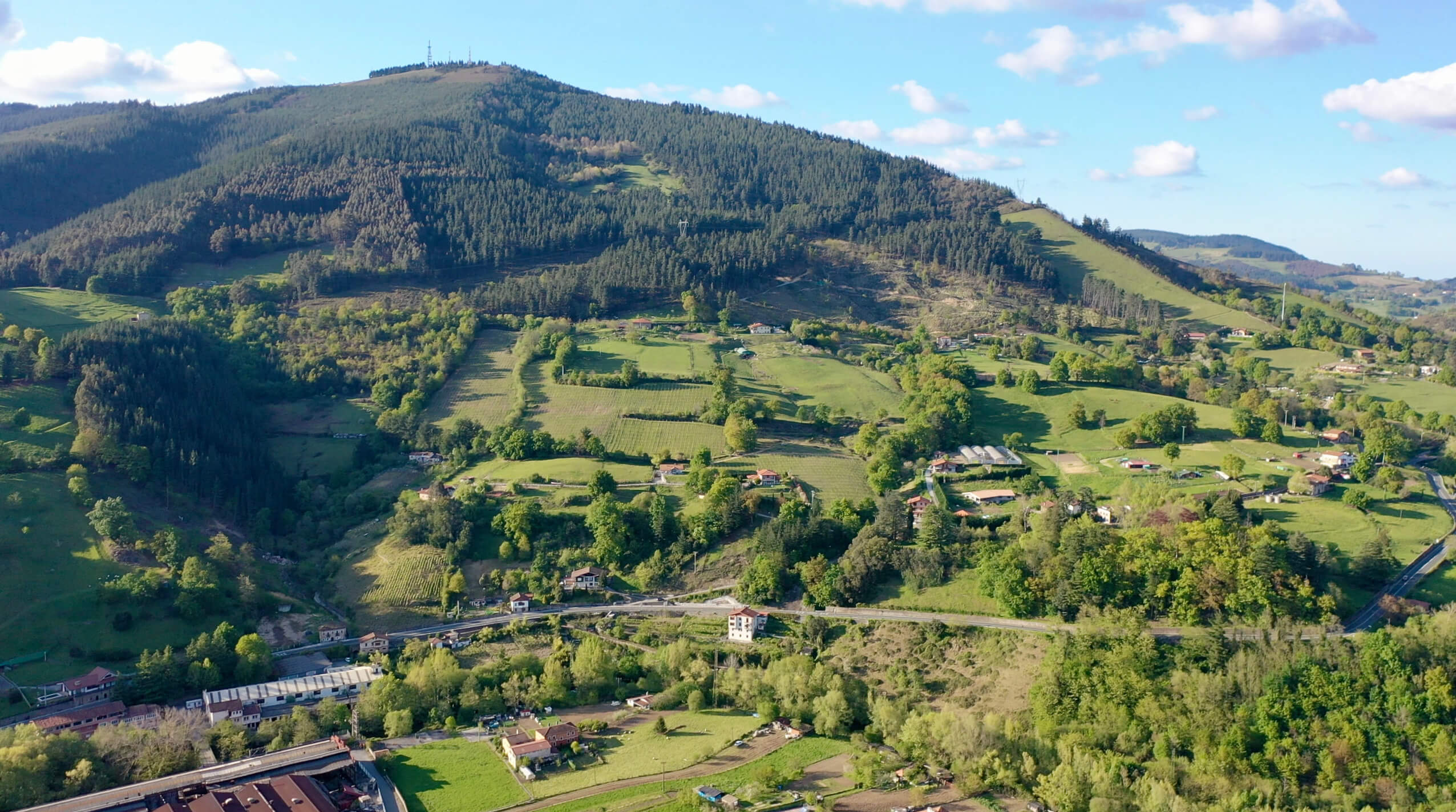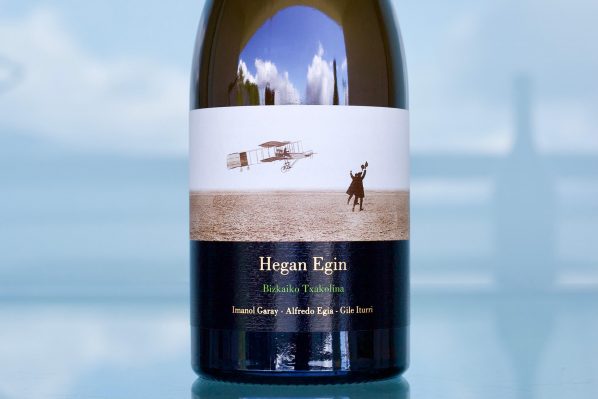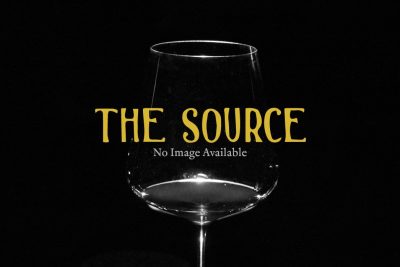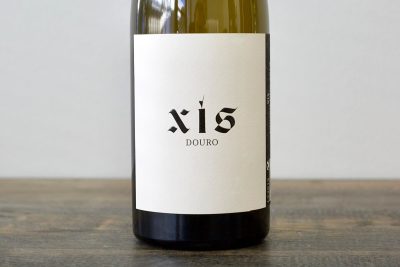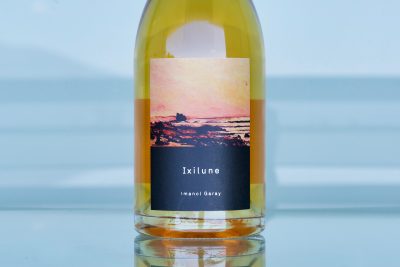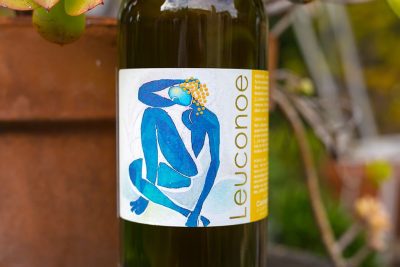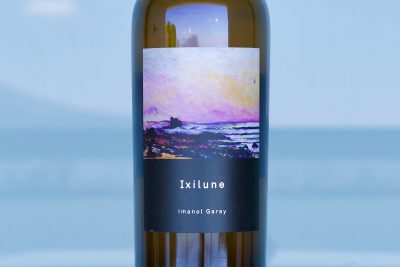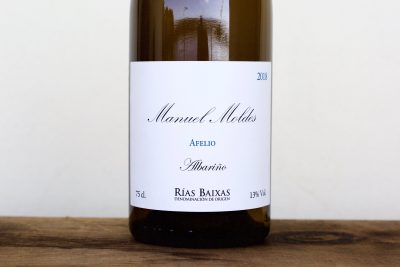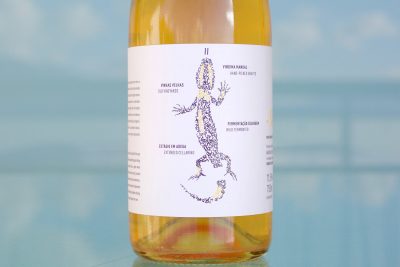Alfredo Egia
Photography and writing by Ted Vance.
“Above all, I want my wines to express sincerity. Aromatically, I like that they show more organic notes of a real nature associated with fermentation, never “synthetic” aromas. But that doesn’t stop me from looking for the complexity that I think my terroir can achieve. I like that the vegetal rusticity of the Hondarrabi Zuri, Hondarrabi Zerratia and Izkiriota Txikia integrates perfectly with a more complex matrix framed by mineral notes and a more or less oxidative evolution without the use of sulfur, offering the wine a natural path to balance. I consider acidity to be a natural part of our wines, being much more integrated when the wine is less intervened. But I think that wine is made above all to be drunk, ingested, and so it should feel good—a like-it feeling that the body is in tune with it, and that is easily digestible. I want them to leave a good memory, combining that part of a certain indomitable nature with the part of elegance to which we want to take it in its upbringing. But I would also like it to reflect the particularity of the vintage, both climatic and the eventual intention of the vineyard in its evolution as a being.” –Alfredo Egia
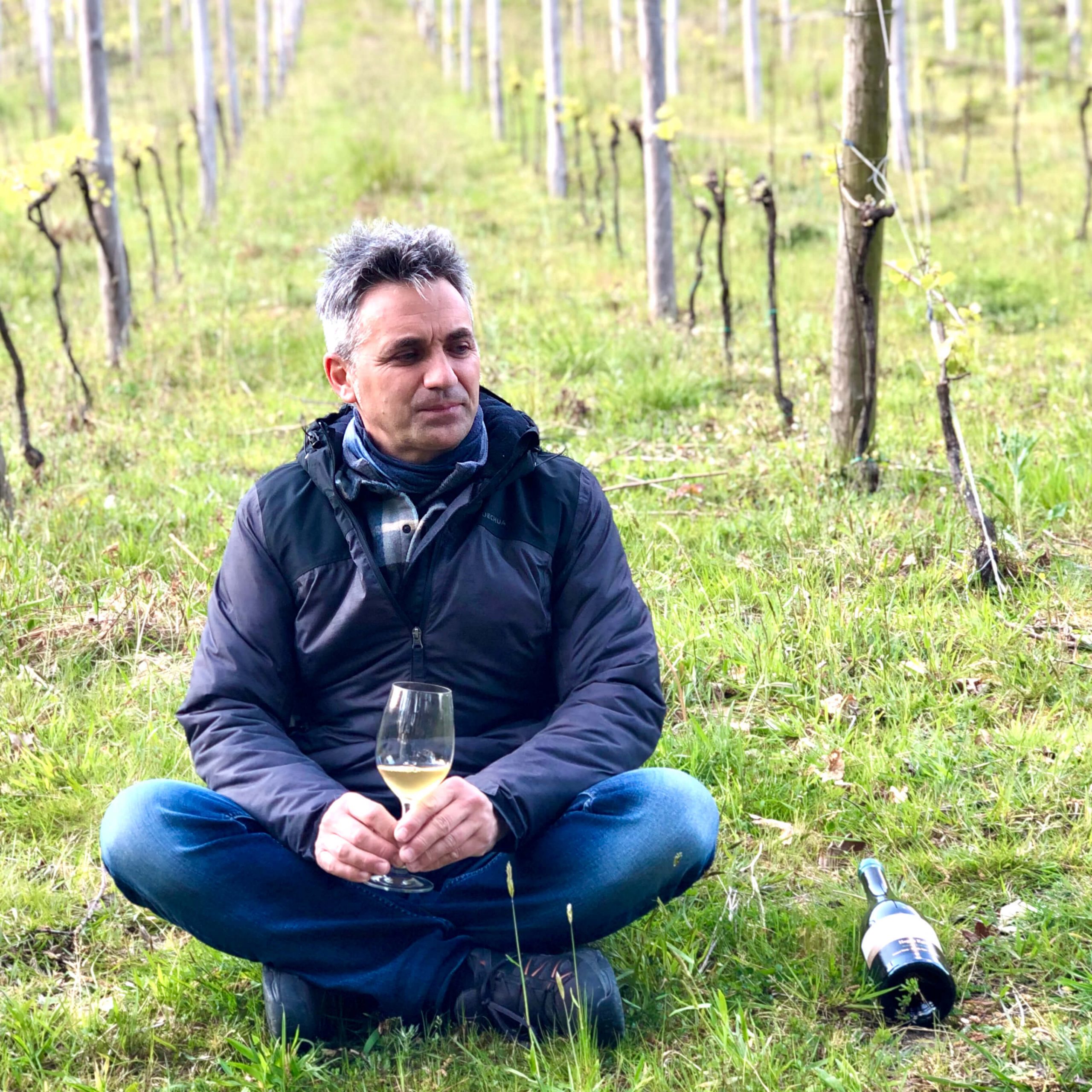
The Style? Rebel Rebel
The wines made in Txakoli by Alfredo Egia are radical for the region but not for the world, since he is committed to biodynamic farming and natural wine methods. They are very different from what is expected from Txakoli (Txakolina, Chacolí), a typically light, minerally and lightly effervescent white wine at bargain prices. And with the influence of Imanol Garay, the highly intense Basque wine naturalist living in France whom he refers to as his mentor, Alfredo is determined to harness the intense energy of these local varieties that give them an altogether different expression, shape and energy, with a constant evolution upon opening that can last for days, morphing from one expressive personality to another. Rebel Rebel and Hegan Egin both start with the almost indescribable x-factors of reductive/mineral pungent aromatic thrust (think Richard Leroy, but softer) that seems to even impart textures into your nose and throat while imbued with citrus notes and fresh, sweet greens and herbs of this verdant countryside. Rebel Rebel is a blend of 80% Hondarrabi Zerratia and 20% Izkiriota Txikia, while Hegan Egin is 50% Hondarrabi Zerratia and 50% Izkiriota Txikia.
These white wines grown on limestone marl and sandstone walk the line with no added sulfur and, because we don’t know how well they will age, they may be best consumed earlier in their life to ensure captivity of their best moment. Whether they can age well or not remains to be seen, but since they have very low pH levels usually below 3.20, they should be insulated for a while. Rebel Rebel is the solo project of Alfredo, and Hegan Egin, while farmed by Alfredo, is a joint venture between Alfredo and fellow euskaldunak (native Basque-speakers), Imanol Garay and Gile Iturri.
First Contact
Our first interaction with Alfredo was at his vineyard in Balmaseda. This April morning was clear and icy cold. Thankfully there were moments in the sun that gave us a thaw, but in the shade, we became chilled to the bone. We spent the morning with Alfredo trying to quickly absorb his rapid-fire Spanish and his extreme enthusiasm while in his vineyard. We gave the wines a first round of tasting and then returned later in the day after lunch to observe a full day of their evolution since their first breath of fresh air after their bottling. The 2019 Rebel Rebel and 2019 Hegan Egin were simply irresistible, and we worked our way through them while camped out in his vineyard, freezing our buns off. By the end of the day, I was convinced of Alfredo’s imminent stardom with his wines that channel the spirit of the Loire Valley luminary, Richard Leroy, through Imanol Garay, one of Alfredo’s direct influencers who spent time working with Leroy prior to starting his own series of projects.
Early Life
Alfredo grew up in Zalla, a town of 8,000 inhabitants that sits twenty-two kilometers (~fourteen miles) southwest of Bilbao, the largest city in Spain’s País Vasco—Basque Country. His family connection to wine originates with his father, who without any previous relationship with viticulture, planted vines to make Txakoli. To regain footing for the near death of the historical cultivation and production of Txakoli in their area, Alfredo’s father began to collaborate with his neighbors. The Egias did everything as a family, so before Alfredo was even a teenager, he joined the work in their vineyards and cellar. His father passed away unexpectedly young, and Alfredo began his pursuit of both the rights to plant and a suitable property to make the investment. In 2001, he acquired the farm that he works on now, nonetheless with great expense in this very expensive Spanish countryside. At the start of the vineyard plantation, he owned a hotel bar with two others where he worked until the vineyard was in full production, and it takes but a moment with Alfredo to understand his deeply ingrained sense of hospitality (and high energy) that served him well during his years in the service industry.
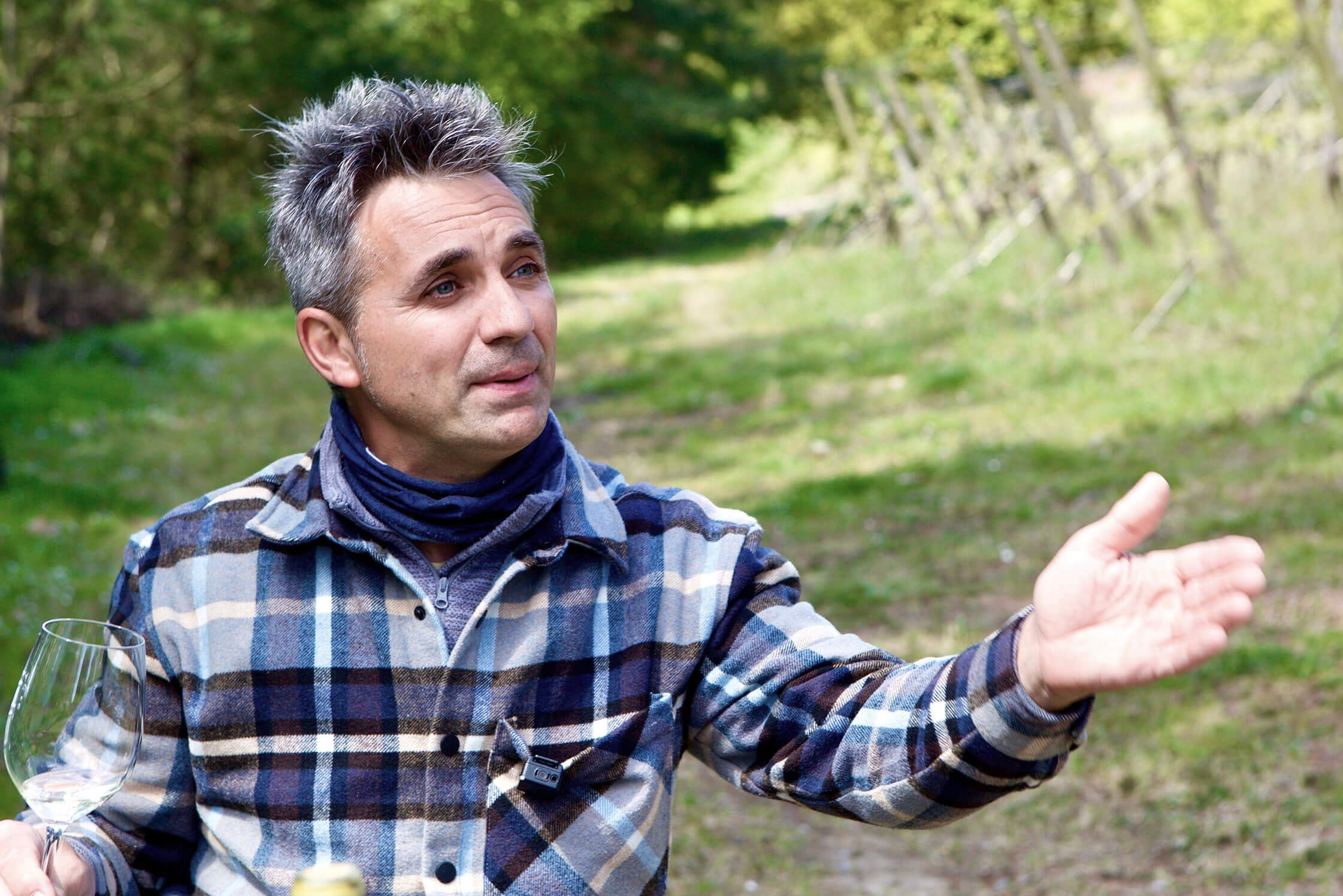
Wine Education & Influencers
After attaining an Agricultural Technical Engineer degree with a specialty in Agricultural Exploitations, from the University of Valladolid, he worked his way through a master’s degree in Viticulture and Enology in Barcelona, at the Polytechnic University of Catalonia. Following his formal education, he worked for two seasons in Penedés and gained practical experience from several local producers.
Alfredo considers himself more of a viticulturist than winemaker and says that his love of wine developed at an early age. Since the beginning, he has gone through a natural evolution in terms of styles but has always maintained his preference for vineyard work. A member of an active tasting group for more than twenty years, he’s had the opportunity to try a lot of different wines but adds that there’s never enough time to keep up with the vast varieties, areas, styles and the different iterations of their independent evolution from season to season. His range of interests leaves few holes between the natural wine world and the progressive modernists (from a general sense, soft-touch extraction, less new wood, little added sulfur, and lower alcohol) in other classically styled regions. On the bigger side of wine, he was weaned on the reds from Rioja and Ribera del Duero, and enjoys Piemontese reds, and Burgundy, even if he considers the Burgundies to be, “A little too perfect, though it doesn’t excite me as it does many in my tasting group.”
Perhaps the most notable influence, aside from his partner in two projects, Gile Iturri (a nickname for Guillermo Iturriondobeitia), is Imanol Garay, a former engineer turned vigneron libre, a man that follows no wine rules and believes in terroir not only as the concept of specific site or even region but as a contiguous philosophical thread practiced in different places that may be forged into one wine. As mentioned, Imanol worked with French natural wine guru Richard Leroy, also Vincente Careme and others, and he’s a far-reaching wine naturalist who maintains an olfactory conscience with a limited tolerance for the grotesque and vulgar often found in the extreme corners of the natural wine movement—he likes them natty, but not downright naughty.
In 2016, while working with Alfredo toward less interventionist methods in the cellar and vineyard, Gile toured Imanol’s projects in France and invited him to Balmaseda. After Imanol visited Alfredo’s vineyard and cellar, Imanol agreed to collaborate with them, and his influence was a definitive push toward biodynamics and non-interventional practices, including spontaneous fermentations and no sulfur additions to allow the wine to evolve in a more oxidative way.
Alfredo welcomes his partnership with Gile and Imanol as fellow travelers in his evolution and he hopes it will continue. Apart from feeling much more comfortable during production, he is convinced that the energy between them and the decisions they make together have coherence, regardless of the wine they produce.
Grapes
The white grapes Alfredo has in his vineyard are principally Izkiriota Txikia and Hondarrabi Zerratia. If those are too much of a mouthful, try the French synonyms, Petit Manseng and Petit Courbu, respectively. Hondarrabi Zuri (Courbu Blanc/Gros Courbu) is the most dominant grape variety in the Txakoli regions and seems to be best utilized for wines raised in inert vessels intended for a shorter shelf life. While Alfredo likes the variety, he also describes it as simpler and lighter than the two white varieties of his focus. Hondarrabi Zerratia (Petit Courbu, and surely other local Basque variations to the name) yields small, compact clusters with small berries. It’s less herbal but more aromatic, complex, and with more body than Hondarrabi Zuri. Alfredo also finds that Hondarrabi Zerratia ages better during an oxidative élevage in barrels, which he thinks it needs in order to work around its stricter and sometimes harder varietal characteristics, like bitterness and potentially strong phenolic presence on the palate, and stinging acidity. Izkiriota Txikia (Petit Manseng), has smaller berries but in looser bunches than Hondarrabi Zerratia, and also makes very complex wines. To taste Rebel Rebel and Hegan Egin together may shed some light on the separation of these two grapes that make up the entirety of their top wines.
Terroir
While there is a bigger continental influence than the other two Txakoli D.O.s (Arabako and Getariako), Bizkaiko is also an Atlantic climate, but the inland areas of the appellation have a continental influence. This slight continental influence means greater highs and lows than those on the coastline. Alfredo has seen the summertime temperatures from a high of 37ºC (100°F) down to -7ºC (19ºF), not too far from what might be felt inside of Spain’s lower lying Rioja areas. However, this countryside looks nothing like Rioja, as it’s completely green. From mid-September to mid-May, one day out of four is wet and the annual average rainfall is 1050mm (~41 inches) and with very high humidity imposed by the Atlantic only 16km (10 miles) away. Directly seventy kilometers to the south is the northwestern end of Rioja, where the average rainfall is less than half of Balmaseda, and mostly void of verdure outside of the agricultural land and further up into the mountains. All these factors in conjunction with Txakoli grape types lead to harvest times around the second week of October (2021), with alcohols ranging between 12-13.5%, depending on the season. Another notable difference between Bizkaiko and the other Txakoli areas is that it has a higher average vineyard altitude. Couple that with a later budbreak and the continental influence and it’s easier to restrict the use of fungicides. Organic and biodynamic farming is extremely hard here, but it’s easier, in theory, than elsewhere in Txakoli.

Alfredo’s bucolic, steep, and south-facing vineyard is surrounded by indigenous trees on all sides. The slope angle ranges between 15%-45% and its altitude from 200 to 300m. The bedrock is locally known as cayuela, a calcareous marl with a slate-like layered appearance that sits nearly vertical, alternating with siliceous sandstones. Most of the topsoil in the shallower upper sections are likely from the underlying bedrock, while those further down in the deeper soils (with an average depth of around 80cm) have greater organic matter content and perhaps other non-bedrock derived components—see further below in the Geology Quickie.

The current breakdown of surface area of Alfredo’s 4.3 hectares (~11 acres) is 2.8 hectares (~7 acres) of Hondarrabi Zerratia/Petit Courbu, 0.5ha (1.25 acres) of Izkiriota Txikia/Petit Manseng, and 0.7ha (1.75 acres). A new 0.3ha parcel of whites will be replanted to Cabernet Franc, a famous French variety that is—believe it or not—a native of País Vasco (Bourisquot et al. 2009), and has DNA parentage from ancient local varieties, Morenoa and Hondarribi Beltza (Robinson et al. 2012). According to more recent DNA studies, the oldest variety from Cabernet Franc is related to Axeria, used in Irouleguy (French Basque Country), and originates in the North of Navarra, (part of Euskalherria, the historical Basque Country).
Today’s two most productive hectares were pastureland planted to vines in 2001, while the other two hectares, planted in 2006, were formerly forest that was cleared in 2001 in preparation for the plantation. The 2006 plantation is where most of the biodynamics is practiced (thus much less productivity), but a practice that covers 60% of his vineyards. The remaining 40% is under sustainable farming but under slow conversion to biodynamics as well. In this part of the wine world it is unusually difficult to manage mildew pressure and that is why almost no one, if anyone else besides Alfredo and his partners, dares practice uncompromising biodynamics. However, Alfredo’s 100% committed to biodynamic farming. “Where I fully practice biodynamics, I assume the losses that may come, whatever they may be. I understand that applying some synthetic product where I have been without this type of product for years would be very counterproductive in terms of the information that the vineyard would receive under this method. I prefer to make a wine blend of biodynamic or conventional origin rather than a wine from a vineyard that is sometimes biodynamic, and other times not—the latter concept does not seem very coherent to me.”
The soil is not tilled but remains with its natural wild cover. A tractor is used to cut the grass between rows, but removal of herbs and grasses under the vines are done by hand, as is all vine interaction. No herbicides and pesticides are used, and all of the Izkiriota Txikia (Petit Manseng) vines are entirely under biodynamic practice. As of 2022, all the sustainable treatments are also incorporated with biodynamic and herbal supplements to ready the vines for full conversion. All treatments, sustainable, biodynamic, and necessary (copper and sulfur treatments permitted in any European farming practice and certification) for grape production are applied in very low doses and in targeted zones and times. Once all the vineyards are converted to biodynamics, he may consider certification. In this area of extremely high mildew pressure, while a bit lower than Txakoli zones closer to the Atlantic, biodynamics seems untenable from a financial standpoint, unless the wines can sell for much more than they already do. As of 2022, a production of about 13,000 bottles is conceivable in a normal year, but he hopes to increase this to between 20,000-25,000 per year on these same four hectares. Alfredo believes this will be possible with continued healthy farming efforts and eventually fully adapting to biodynamic practices and more precision agriculture for low-production zones of his vineyard, along with new vine plantations with higher vine density and the acquisition of vineyards that others no longer want, or that are abandoned.
A Geological Quickie (with the contribution of geologist, Ivan Rodriguez)
Alfredo’s vineyards in Balmaseda are geologically located within the Basque-Cantabrian Basin. This area contained sediments of more than ten kilometers (~six miles) depth that accumulated over 250 million years during its rifting phase (opening), which resulted in the creation of today’s Bay of Biscay (in Basque, Bizkaiko Golkoa). Balmaseda’s sediments correspond to a former coastal environment related to the development of a barrier reef naturally high in calcium carbonate-rich organisms in a warm tropical sea with significant terrigenous sediments—siliceous sediments derived from land instead of marine environments. These siliceous depositions are probably due to high precipitation rates and erosion of the once Himalayan-height Variscan mountains whose severely eroded nubs can be found scattered through Europe in parts of the Pyrenees, and the many massifs around Europe (Iberian, Armorican, Central, Bohemian) and other places, like Corsica and Sardinia.
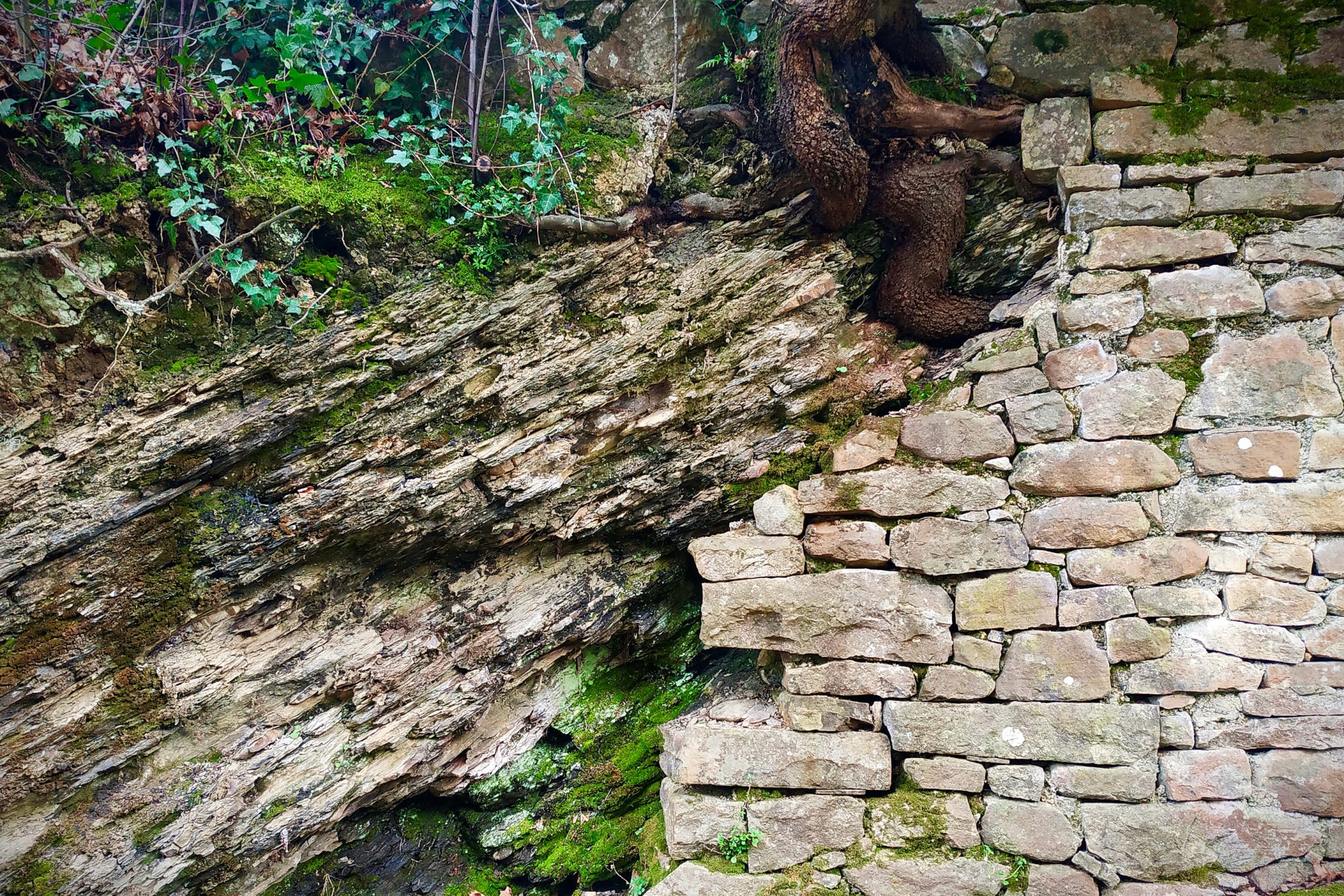
Balmaseda’s bedrock is generally composed of a layering of marl (locally referred to as cayuela) and siliceous sandstone. Cayuela is the result of continental sediments (mainly clay rich in organic material) caught inside the calcium carbonate-rich barrier reef. The sandstone bedrock elements are thought to be developed by former sand bars between the beaches and reefs. In addition to this bedrock, toward the south, the Cadagua River passes through limestones that continue to erode calcareous materials that are transported downstream through Balmaseda, finally reaching the estuary of the large Spanish city, Bilbao—the destination for three medium-sized Northern Spanish rivers (Cadagua, Nervion and Ibaizabal) before entering the Bay of Biscay. Alfredo’s vineyard’s bedrock is characterized by the uplifted and twisted cayuela marlstones and sandstone, and a topsoil partially derived from the underlying bedrock that may also contain calcareous sediments from further upstream of the Cadagua that was likely deposited during its more torrential periods.
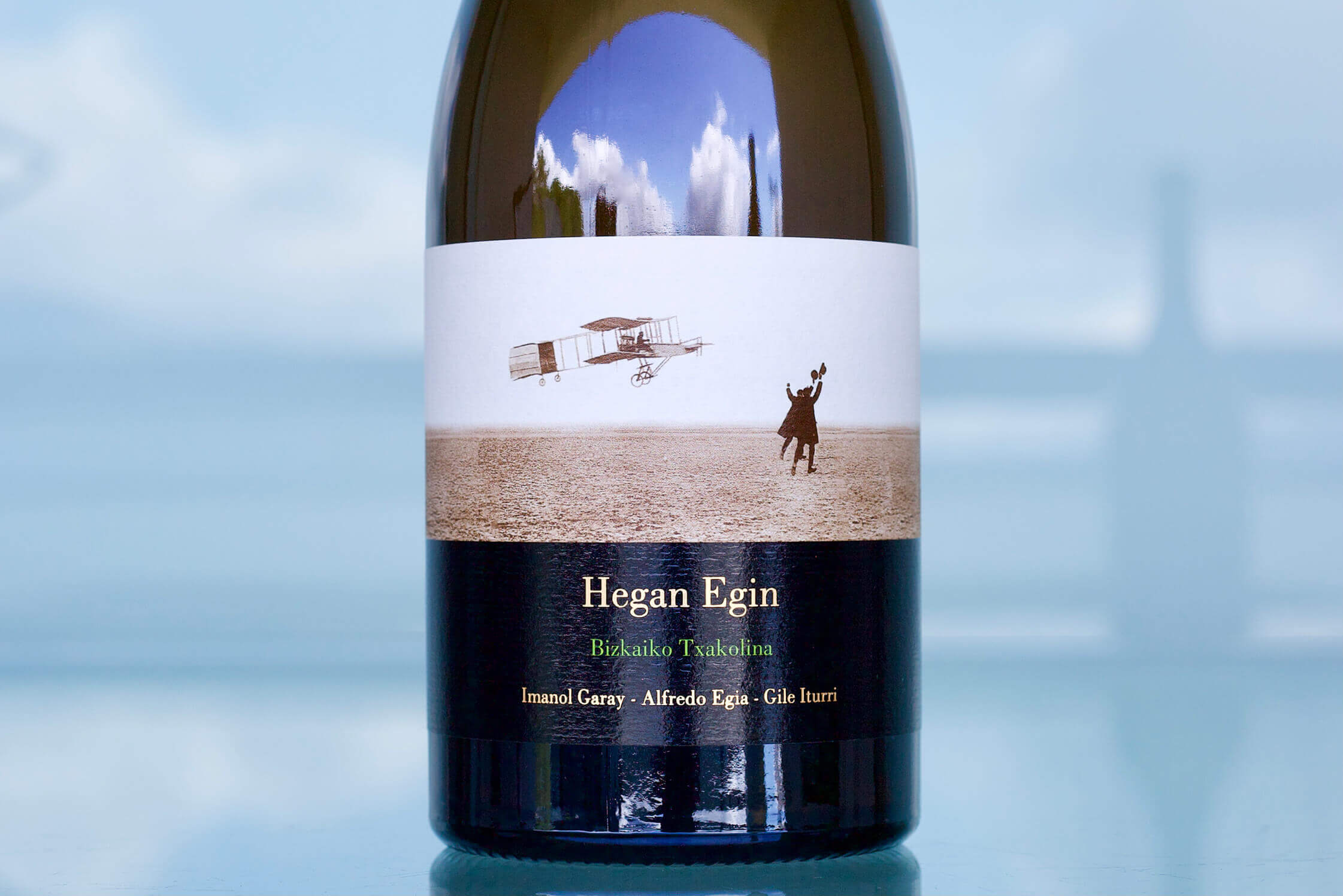
The Cellar
Hegan Egin and Rebel Rebel are vinified in the same way: manually harvested, directly pressed with whole bunches, and spontaneously fermented in barrels. During the aging process, Hegan Egin spends its time in one new French oak barrel and two used. Rebel Rebel is raised in old French oak barrels. The malolactic fermentation usually overlaps with the end of the alcoholic fermentation and finishes by the end of spring. The wines remain on their lees without bâtonage (lees stirring), and some barrels are topped up while others are intentionally oxidized and not topped up, depending on the health of the oxidation. Before the following harvest, the wines are blended into stainless tanks where they rest for another six to ten months prior to bottling. Neither wine is filtered, fined, or has added sulfur. Rebel Rebel is a blend of 80% Hondarrabi Zerratia and 20% Izkiriota Txikia, while Hegan Egin is 50% Hondarrabi Zerratia and 50% Izkiriota Txikia.
Izaki (a new wine that has not yet been imported) is a blend of vineyards that began biodynamic farming in 2021. Half of the grapes are vinified the same as Hegan Egin and Rebel Rebel and raised in two old 400-liter barrels, while the other half is in stainless steel. The first vintage of this wine, 2020, had 15mg/L (15ppm) of SO2 added, and the wine was fined for turbidity.
Alfredo Egia - 2019 Hegan Egin, Bizkaiko Txakolina
Out of stock

